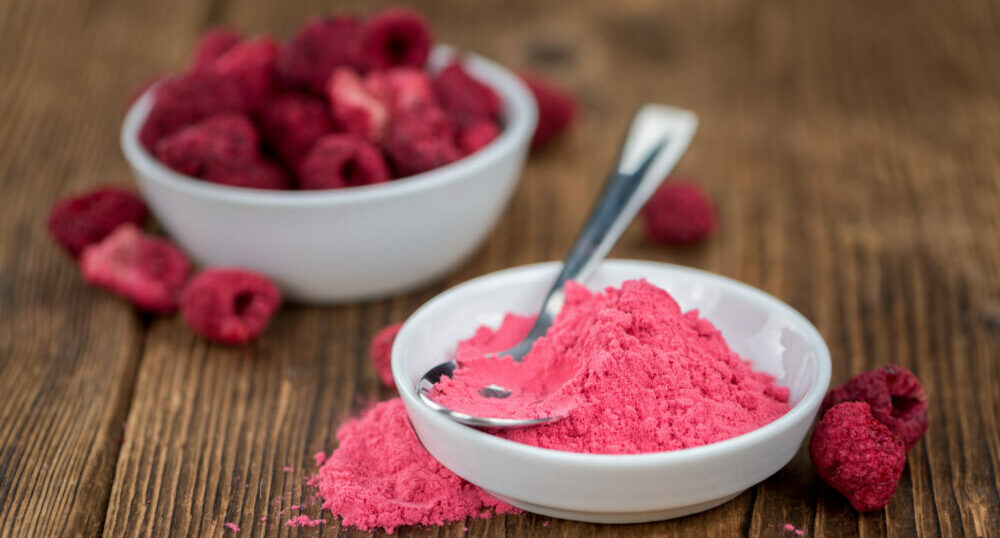From Laboratory to Plate: The Science of Freeze-Drying and its Culinary Wonders

In the realm of food preservation, freeze-drying stands out as a technological marvel that seamlessly merges science with nutrition. This method, renowned for its ability to retain the original flavor, color, and nutritional content of foods, has become a cornerstone in the world of preserving fruits, vegetables, and berries. In this exploration, we delve into the scientific intricacies of freeze-drying and unravel the nutritional prowess it imparts to these delectable edibles.
The Freeze-Drying Process:
At its core, freeze-drying is a process that involves removing moisture from food through sublimation—a phase transition in which water changes directly from a solid to a vapor without passing through the liquid phase. The journey begins with flash freezing the food, locking in its structure and preventing the formation of ice crystals that can compromise texture and nutritional integrity.
Next, the frozen food undergoes a vacuum chamber, where low pressure encourages sublimation. This crucial step removes up to 98% of the food’s moisture content while preserving its cellular structure. The result is a lightweight, shelf-stable product with minimal loss of nutritional value.
Preserving Nutrient Integrity:
One of the most significant advantages of freeze-dried food lies in its ability to retain essential nutrients. Conventional drying methods often expose foods to high temperatures, leading to nutrient degradation. Freeze-drying, however, occurs at lower temperatures, minimizing the impact on the food’s nutritional composition.
Studies have shown that freeze-dried fruits, vegetables, and berries maintain higher levels of vitamins, antioxidants, and phytonutrients compared to their traditionally dried counterparts. The preservation of these bioactive compounds not only enhances the food’s health benefits but also contributes to its vibrant color and robust flavor.
Extended Shelf Life:
Freeze-dried food boasts an impressive shelf life, a result of the minimal moisture content achieved during the sublimation process. By removing water, a primary catalyst for bacterial growth and enzymatic reactions, freeze-drying effectively halts the deterioration of food. This prolonged shelf life not only reduces food waste but also ensures a stable and reliable food supply in various settings, from camping trips to emergency preparedness.
Versatility and Culinary Applications:
The versatility of freeze-dried fruits, vegetables, and berries extends far beyond mere preservation. The lightweight and compact nature of these products make them an ideal choice for hikers, campers, and individuals on the go. Moreover, the absence of added preservatives or artificial flavors in freeze-dried foods allows for a clean and unadulterated culinary experience.
In the culinary realm, freeze-dried ingredients have become a staple for chefs seeking to elevate their dishes. The concentration of natural flavors, combined with the convenient form of these freeze-dried wonders, enables chefs to experiment with a diverse array of recipes. From incorporating freeze-dried berries into desserts to using freeze-dried vegetables to enhance the umami in savory dishes, the applications are as limitless as the culinary imagination.
Environmental Impact:
The freeze-drying process also contributes to sustainability by reducing food waste. The extended shelf life allows for better inventory management, minimizing the disposal of perishable foods. Additionally, the lightweight nature of freeze-dried products reduces transportation-related carbon footprints, making them an environmentally conscious choice for both consumers and manufacturers.
Case Studies: Nutritional Profiling of Freeze-Dried Varieties
- Freeze-Dried Berries: Unlocking Antioxidant Potential
Berries, revered for their antioxidant content, undergo minimal nutrient loss during freeze-drying. A comparative analysis between fresh and freeze-dried berries reveals that the latter retains a significant portion of its anthocyanin and vitamin C content. These antioxidants play a crucial role in neutralizing free radicals, offering potential health benefits such as improved cardiovascular health and anti-inflammatory effects.
- Freeze-Dried Vegetables: Concentrated Nutrients for Optimal Health
Vegetables, rich in vitamins, minerals, and fiber, maintain their nutritional density through the freeze-drying process. Notably, the vitamin B complex, essential for energy metabolism and neurological function, is well-preserved in freeze-dried vegetables. The retention of dietary fiber also contributes to digestive health and satiety, making freeze-dried vegetables a wholesome addition to a balanced diet.
- Freeze-Dried Fruits: A Burst of Vitamins and Natural Sweetness
Fruits, celebrated for their vitamin and mineral content, emerge from freeze-drying with vibrant colors and intensified flavors. Comparisons between fresh and freeze-dried fruits showcase the preservation of vitamin A, vitamin C, and potassium. This not only enhances the nutritional profile but also delivers a delightful burst of natural sweetness in every bite.
In the intricate world of food preservation, freeze-drying stands as a scientific marvel that transcends mere culinary convenience. Its ability to retain the nutritional essence of fruits, vegetables, and berries while ensuring extended shelf life has revolutionized the way we approach food. As we unravel the scientific intricacies and nutritional benefits of freeze-dried foods, it becomes evident that this method not only preserves the integrity of our favorite edibles but also paves the way for a sustainable and nutrient-rich culinary future.
In Centralsun shop we have a wide selection of different freeze-dried products. See the selection HERE.